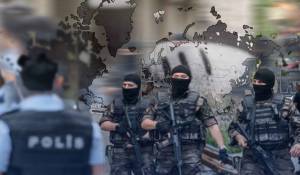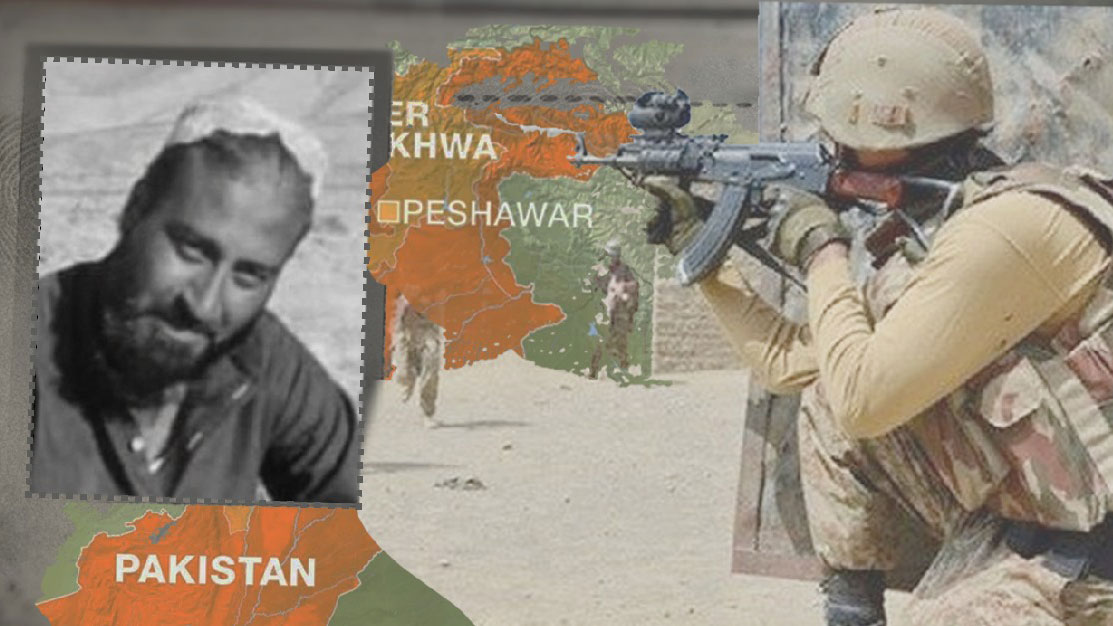
Iftikhar Firdous

December 17, 2025
By | Iftikhar Firdous , Ihsanullah Tipu Mehsud

The fringes of Peshawar City have historically sheltered the most lethal Taliban factions. Hassankhel, situated on the outskirts of Peshawar and previously a part of the semi-autonomous Frontier Region (FR) of ex-FATA, has long been a connecting route for militants between eastern Khyber Pakhtunkhwa’s Nowshera and the now tumultuous Southern districts, a centre of the most brazen Taliban attacks, via Kohat.
Since the merger of FATA into Khyber Pakhtunkhwa, Hassankhel is now a part of the Peshawar district. However, tribal affiliations and geography have overridden governance boundaries in Hassankhel. The area is connected to Darra Adamkhel, an infamous illegal arms manufacturing market turned global jihadist transit point after 9/11.
The Tehrik-e-Dara Adamkhel, a militant faction with both local and global Jihadi links, operated in the region. Commander Hazrat Ali led the group, while Commander Tariq Afridi, also known as Tariq Geedar, a top affiliate of Lashkar-e-Jhangvi and the Pakistani Taliban (Tehreek e Taliban Pakistan TTP) joined him. Afridi orchestrated several high-profile attacks in Peshawar and surrounding areas, resulting in the killing of senior police officials, including Deputy Inspector-General, Malik Saad, in January 2007, and Police Superintendents Kalam Khan and Bilal Haider in March 2012 and November 2012, respectively. He also attempted to blow up the Kohat Tunnel in 2011, a critical route connecting southern Khyber Pakhtunkhwa to Peshawar while also being responsible for the kidnapping and murder of Polish geologist, Piotr Stańczak in 2009. Additionally, Afridi targeted the Shia community and carried out numerous attacks on security forces in the region.
A screen grab from a video shows Piotr Stanczak, a Polish engineer, in captivity in February 2009, following his kidnapping. Image Source: TKD Archives
Afridi’s affiliates were active in Peshawar, Hangu, Kohat, Kurram, and Orakzai districts, primarily engaging in sectarian violence, and attacks on NATO convoys carrying logistics along the route to Afghanistan, where NATO forces were stationed.
Tariq Afridi died in July 2012 under mysterious circumstances, with the exact cause of his death remaining unknown, however; it was rumored that he was killed by his own guard.
Tariq Afridi with the former TTP Chief Hakimullah Mehsud. Image Source: TKD Archives
The outskirts of Peshawar, including Mattani and Adezai areas, were home to families with links to local and international jihadists, a painful reminder of the city's scars inflicted due to the militants' led violence that affected every part of the provincial capital and its suburbs over the years.
TTP Commander Jangrez, considered to be a close associate of Tariq Afridi, was involved in several attacks including a car bomb attack on a convoy of the Frontier Corps (FC) in Badaber on Peshawar’s outskirts in June, 2013 and beheadings of security forces personnel and planting Improvised Explosive Devices (IEDs) in their bodies to target those who came to collect them. Jangrez was killed in an operation in the suburbs of Peshawar between 2013-2014.
The Tariq Geedar Group (TGG) is said to be responsible for masterminding several high-profile attacks, including the killing of Khyber Pakhtunkhwa's paramilitary police chief, Sifat Ghayoor, in August 2010, the January 2016 assault on Bacha Khan University in Charsadda, Pakistan, the September 2013 bombing of a church in Peshawar, and attacks on Bacha Khan Airport and the Consulate General of the United States in Peshawar in December 2012.
In May 2016, the US State Department designated the Tariq Geedar Group (TGG) as a Specially Designated Global Terrorist (SDGT) entity.
Image Source: State Department’s Official Website
Another key commander of TGG, Umar Naray (aka Khalifa Umar Mansoor), masterminded the 2014 attack on the Army Public School in Peshawar, the deadliest terrorist attack in Pakistan’s history which was even condemned and disowned by Al Qaeda, the Afghan Taliban, and the TTP's breakaway faction, Jamaat-ul-Ahrar.
Mansoor was killed in a US air strike in Afghanistan’s Nangarhar province in 2016. The last member of this family, Shamrooz (aka Sheenay), was killed in an intelligence-based operation on March 6, 2024, for his involvement in several extortion cases.
By mid-2022, reports of an increased presence of armed men began circulating among locals in the area. By October, wall chalking and pamphlets carrying TTP’s name appeared in the former Frontier Region (FR) of Peshawar. A few days later, locals reported that TTP members started searching vehicles for government employees and warned locals to attend morning prayers at mosques. Two days later, a TTP flag was hoisted on a mount but was removed by the police.
Image Source: The Khorasan Diary’s Twitter Handle
Following these developments, a senior military official visited the area to inspect the increasing militant presence and control the law and order situation. A sniper shot was fired at the official's vehicle, but he survived. However, an array of bullets then attacked the security convoy accompanying him, resulting in the death of two military officials and injuring seven others.
This was the first prominent incident which brought Commander Abdul Rahim's name to the forefront. Later that week, three policemen patrolling the area were also targeted. The situation on the outskirts became a constant problem for law enforcement as reports of regular militant checkpoints emerged immediately after dark.
In August 2023, TTP’s official mouthpiece, Umar Media released a video featuring commander, Abdul Rahim.
Image Source: Screen Grab of the video released by Umar Media
Abdul Rahim served as a Pakistan paramilitary FC soldier for over a decade and a half. While official accounts suggest he was dismissed for supplying weapons to militants from Darra Adamkhel, The Khorasan Diary could not locate the documentation supporting this claim.
However, records confirm his removal from the service due to an unapproved absence. He then traveled to Afghanistan in 2014, where he joined the Afghan Taliban. His activities during this period remain shrouded in mystery. Upon returning to Peshawar, he was spotted alongside TTP members, specifically the Asad Afridi Group, in 2022.
However, the group utilized his operational and training skills, and he once told his confidantes that he used to teach how to use the RPG-7. He imparted training to several TTP men, particularly mentioning the Swat chapter of the TTP. He reportedly chose the alias Khaksar, which his group members used to call him.
By February 2023, Abdul Rahim had begun forming a quasi-state, and social media accounts linked to his group announced their governance setup in a few remote villages.
Image Source: Screen Grab of the social media account’s post
However, he remained a consistent high-value target for the security forces, who attacked him using indigenous drones twice, but he managed to escape both times. But his brother, Abdul Rahman, who sheltered him and his weapons, was killed in one of these strikes.
“He was a mortar expert in the FC. He served in FC for 12 years. He left FC himself after participating in the jihad in Afghanistan under the banner of the Islamic Emirate of Afghanistan. While still a member of the FC, he began participating in Tashkeels (fighting units) for the jihad in Afghanistan,” a close aide of commander Abdul Rahim told The Khorasan Diary on the condition of anonymity.
On July 10, Inter-Services Public Relations (ISPR), Pakistan’s military media wing, released a statement confirming the killing of commander Abdul Rahim, a high-value target with a Rs6 million bounty on his head, along with two of his accomplices in a joint intelligence-based operation conducted by the military and police in the Hassankhel area, where he hailed from.
Peshawar Police have confirmed the identities of the killed militants as commander Abdul Rahim from Hassan Khel, Naqeeb Khan from Darra Adam Khel, and Sabir Khan from Matni Sherkra.
“He had been living in a house where he was targeted, which is located on the main road, for six months. He used to be present in his area constantly. Despite his presence for such a long period, the Pakistani government failed to locate him during that time,” the close aide claimed.
He further added that two of his brothers were killed, in two separate operations, one during an IBO and the other in a Pakistani drone strike.